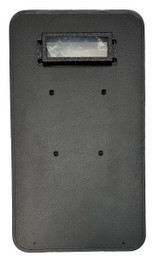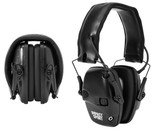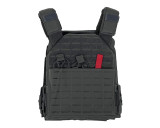Exploring Optical Sights: Types and Practical Applications
Exploring Optical Sights: Types and Practical Applications
Optical sights, those ingenious devices that enhance accuracy and precision in various shooting and observation activities, have become indispensable tools for both enthusiasts and professionals. Whether it's hitting bullseyes at the range, tracking elusive game, or engaging targets in tactical situations, optical sights provide the edge needed for success. In this article, we delve into the world of optical sights, exploring the various types available and providing insights into how to effectively utilize them for different scenarios.
Understanding Optical Sights
Optical sights, commonly known as scopes, are optical devices that provide an aiming point or reticle for aligning the firearm with the target. They come in various shapes and sizes, each catering to specific shooting needs. The reticle, often referred to as crosshairs, assists in accurate aiming by offering a clear reference point, minimizing guesswork in targeting.
Types of Optical Sights
There's a multitude of optical sight categories, each tailored to specific applications. Reflex sights, for instance, are designed for rapid target acquisition, making them ideal for close-quarter shooting scenarios. Holographic sights utilize advanced technology to provide a superimposed holographic reticle, offering unlimited eye relief and quick target acquisition. Red dot sights, known for their simplicity, provide an intuitive aiming experience. Lastly, magnified scopes offer varying levels of zoom, making them suitable for long-range precision shooting.
Reflex Sights
Reflex sights, characterized by their single-point aiming reticles, offer rapid target acquisition due to their "both eyes open" aiming method. Designed for situations requiring quick shots, reflex sights are particularly useful in close-quarters engagements. They allow shooters to maintain situational awareness while ensuring accurate shots on target.
Holographic Sights
Holographic sights employ cutting-edge technology to project a holographic reticle onto a viewing window. These sights provide several advantages, such as unlimited eye relief, making them perfect for awkward shooting positions. Holographic sights excel in dynamic shooting scenarios, offering a clear and precise aiming point even in fast-paced situations.
Red Dot Sights
Red dot sights are renowned for their simplicity and ease of use. They offer a single red dot as the aiming point, eliminating the need for complex reticles. This design ensures quick target acquisition and minimizes the need to align multiple elements in the sight picture. Red dot sights are highly versatile, suitable for a wide range of shooting disciplines.
Magnified Scopes
For those seeking precision at longer distances, magnified scopes are the go-to choice. These scopes offer various levels of magnification, allowing shooters to zoom in on distant targets. Magnified scopes are favored by hunters and long-range shooters alike, providing the ability to compensate for bullet drop and windage.
Choosing the Right Sight
Selecting the right optical sight depends on multiple factors, including the intended use, shooting distance, and firearm type. Understanding these considerations will help shooters make an informed decision that aligns with their specific needs and preferences.
Proper Sight Alignment and Shooting Technique
Regardless of the type of sight chosen, proper sight alignment and shooting technique are crucial for accuracy. Achieving correct sight alignment and sight picture, coupled with maintaining a steady shooting position, controlling breathing, and executing a smooth trigger squeeze, are fundamental aspects of accurate shooting.
Adapting to Different Environments
Different lighting conditions and terrains demand adjustments to sight settings. Properly zeroing the sight ensures consistent accuracy across various scenarios. Whether shooting in low light or under bright sunlight, understanding how to adapt your optical sight to different environments is essential for maintaining accuracy.
Maintenance and Care
The longevity and performance of optical sights hinge on regular maintenance and care. Keeping them clean, free from dust, moisture, and scratches, ensures they remain in optimal condition. Properly maintaining these precision instruments prolongs their lifespan and ensures consistent performance over time.
Conclusion
Optical sights come in an array of types, each tailored to specific shooting scenarios. By gaining an understanding of these sight types and mastering their usage, shooters can significantly enhance their accuracy, confidence, and overall shooting experience. As technology continues to advance, optical sights continue to evolve, providing shooters with an ever-expanding arsenal of tools to excel in their shooting endeavors.
Recent Posts
-
Understanding Ballistic Shield Ratings and Their Applications
The Trusted Name in Tactical Defense - BattleSteel® When it comes to protecting those who protect us …2025-04-19 -
The Importance of Hearing Protection in Tactical Environments
The Legacy of BattleSteel® BattleSteel® is a trusted name in the world of tactical defense equipment …2025-04-14 -
How to Properly Fit and Wear a Plate Carrier
About BattleSteel and Their Mission BattleSteel is a trusted name in the tactical gear industry, ren …2025-04-11


